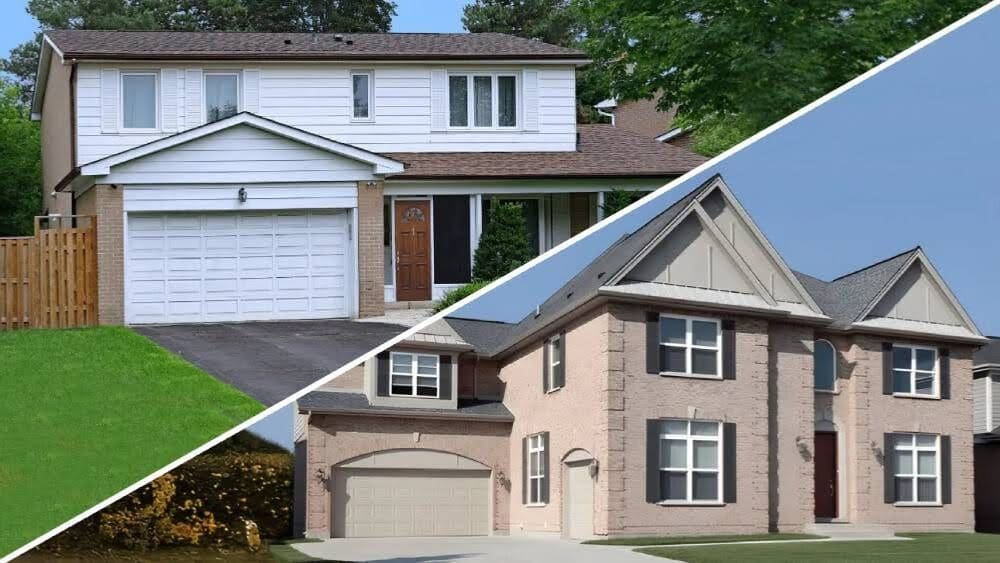
The act of buying a house feels like a pivotal, exciting, momentous, and even romantic endeavor. You’re taking a leap into the next phase of your life — making a home your own for the long haul or to use as an investment stepping stone. While this is the stuff of daydreams, the actual process of buying a house is much less sexy. It’s meticulous, calculated, and full of logistical maneuvers. However, it’s all necessary for nabbing that home of your dreams. One of the many steps along the way that you might not fully understand is the matter of down payments. The down payment on a home gets your foot in the door, and the mortgage lets you move in. It’s the first financial move you’ll make in securing your new home purchase. And it’s a lot of money, so you’re probably wondering: When do you have to give it to the seller? Down payment due dates can be a bit of a gray area. There’s not one clear way to approach the down payment, and no uniform set amount. The size of your down payment and when it is due can depend on a variety of factors, like where you’re buying, how much you have saved, and what kind of mortgage you’ll get. With all of the different variations and options out there when it comes to down payments, making a plan can instill doubt and confusion. How do you know exactly what to pay and when to pay it? We’re here to set your mind at ease and help you decide. We’re breaking down all the details for how much you should pay and when the down payment is due with input from industry authorities. When you’re ready to buy a house, you’ll usually need to show your mortgage lender proof that you have the down payment saved. How much you pay depends on the specifics of your financials, and what kind of mortgage you’re getting. While it’s touted as the so-called ideal amount, it takes significant savings to afford a 20% down payment on a home. Luckily, there are options for homebuyers making modest or low down payments, including assistance programs. Veterans have access to the Veterans Affairs (VA) loan when buying a home, a great benefit of serving the country as a current active military member, a military veteran, or as a surviving spouse of someone in the military. Drew May, a leading real estate agent in Augusta, Georgia, where Fort Gordon is located, says there is “no better financing” than a VA loan for military buyers. A VA loan provides 100% financing with no money down — so no down payment. Making it even more desirable, as of 2020, there are no cap limits on VA home loans. “So, someone could literally buy a $700,000 house with no money down with a VA loan,” says May. A Federal Housing Administration loan is backed by the federal government. It’s popular with first-time homebuyers because if you don’t have a high credit score or can’t afford a large down payment, you can still get approved for an FHA loan with a low down payment of 3.5%. Unless you’re putting 20% down on a mortgage loan, mortgage insurance is required to protect the lender if the buyer defaults on their loan. So, the FHA loan comes with two insurance premium payments: an upfront premium of 1.75% of the loan amount due when the loan is granted, and an annual insurance premium ranging from 0.45% to 1.05% that’s paid with the mortgage. If you’re looking for a home in a rural or suburban area and meet income requirements, a USDA loan could be an option for a zero-down-payment mortgage. NACA is a non profit, HUD- certified mortgage organization focusing on low-to-moderate-income homebuyers and lower-income areas. Their mission is to broaden homebuying access and opportunity to everyone. They offer a 30-year or 15-year fixed-rate term with no down payment or closing costs required for those who qualify. There are also location-based state and community assistance programs for first-time homebuyers that are worth researching. For qualifying buyers, they offer no down payment and reasonable interest rates on their mortgages. A conventional loan is a typical non-government-backed mortgage loan provided by a non-depository mortgage lender, bank, or credit union. Lenders have varying down payment requirements, but usually the lowest possible down payment for a conventional loan is 3%. But if you have enough saved for a larger down payment, it will definitely pay off in the long run; similar to government-backed loans, conventional lenders will charge private mortgage insurance (PMI) to offset the risk that comes with a lower down payment. “The way you get out of private mortgage insurance is at the 20% level of down payment. So, often if somebody’s sold a house and they’re walking away with a lot of equity, they’ll roll that in and do at least a 20% down payment, if they’re move-up buyers and have the cash,” says May. The government-sponsored enterprise Freddie Mac offers a Home Possible Mortgage for qualified buyers with as little as a 3% down payment. It’s a type of conventional loan. Okay, so you’ve done your research and discussed your options with your family, and consulted with your trusted real estate agent. You know what type of mortgage loan or program to apply for and what amount of down payment you can afford. Now what? How and when do you actually make the down payment? The down payment is made in two installments. The first one, which is a smaller portion of the down payment, is the earnest money — essentially a monetary show of good faith to the seller once the offer is accepted and the home purchase contract is signed. The remaining down payment is made at closing, at the same time that closing costs are paid. Once the payments are made, closing is completed, and the title is transferred from the seller to the buyer, the buyer officially owns the home. Earnest money is a portion of the down payment included as part of the offer made on a home to the seller. If the contract is successful and it’s time to close, the buyer will roll the earnest money deposit into the total down payment amount. If the buyer breaks the contract, the seller can in most cases keep the earnest money. Earnest money is usually refundable if certain contingencies aren’t met causing the termination of the contract. These include: The amount of earnest money you pay can range from $500 on the low end in a slow market where the seller isn’t getting many offers, or up to 3% of the purchase price in a fast, in-demand market. If there are multiple bids on one property, the earnest money can even get up to 10% in order to beat out the competition. There are common amounts associated with an area that vary from place to place, so a licensed real estate agent can best advise on what’s typical for the market. The earnest money is deposited into an escrow account, or a neutral third-party company that secures the money and then disperses it to the seller at closing. The money is delivered via cashier’s check or wire transfer. The rest of the down payment will be due at the closing table. Like the earnest money deposit, the amount will be paid in the form of a cashier’s check or wire transfer. A word to the wise: proceed with caution. Wire transfer fraud happens, but as long as you’re aware and practice due diligence, it can be avoided. To protect yourself against wire transfer fraud, take the following steps: Closing costs may be included in the remaining down payment wire transfer, depending on the agreement and arrangements made between the buyer and seller. You’re almost there. You’re so close to being a new homeowner you can taste it. The title or escrow company received the cashier’s check or wire transfer and everything is in order. They will then send all funds necessary to the seller to close the deal — the earnest money, down payment, and the mortgage amount loaned by the lender. Then, the seller will pay their part of the negotiated closing costs out of this final sale amount, and that’s it. The deal is done! And that’s the deal with down payments. Now that you know how much you need for each type of mortgage loan and when each part of the down payment is due, go forth and find your new home.Explaining down payments
VA loan
FHA loan
USDA loan
NACA loan
State first-time homebuyer assistance
Conventional loan
Freddie Mac Home Possible
Down payment logistics
Earnest money: The breakdown
The remaining down payment
Final steps



